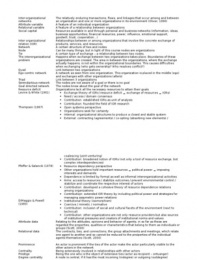Class notes
Glossary - Relationships and Networks of Organizations
- Course
- Institution
This separate summary contains all the terms that need to be known for the exam of the "relationships and networks of organizations" course. There are quite a few, and they are pretty difficult! That's why it's nice to have a summary that you can quickly scan just before the exam. Includes tables a...
[Show more]



